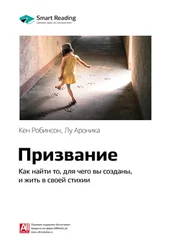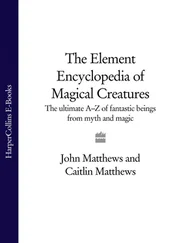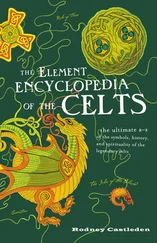Кен Робинсон - The Element
Здесь есть возможность читать онлайн «Кен Робинсон - The Element» весь текст электронной книги совершенно бесплатно (целиком полную версию без сокращений). В некоторых случаях можно слушать аудио, скачать через торрент в формате fb2 и присутствует краткое содержание. Год выпуска: 2009, ISBN: 2009, Издательство: Penguin Books Ltd, Жанр: Самосовершенствование, на английском языке. Описание произведения, (предисловие) а так же отзывы посетителей доступны на портале библиотеки ЛибКат.
- Название:The Element
- Автор:
- Издательство:Penguin Books Ltd
- Жанр:
- Год:2009
- ISBN:9780141911250
- Рейтинг книги:3 / 5. Голосов: 1
-
Избранное:Добавить в избранное
- Отзывы:
-
Ваша оценка:
- 60
- 1
- 2
- 3
- 4
- 5
The Element: краткое содержание, описание и аннотация
Предлагаем к чтению аннотацию, описание, краткое содержание или предисловие (зависит от того, что написал сам автор книги «The Element»). Если вы не нашли необходимую информацию о книге — напишите в комментариях, мы постараемся отыскать её.
The Element — читать онлайн бесплатно полную книгу (весь текст) целиком
Ниже представлен текст книги, разбитый по страницам. Система сохранения места последней прочитанной страницы, позволяет с удобством читать онлайн бесплатно книгу «The Element», без необходимости каждый раз заново искать на чём Вы остановились. Поставьте закладку, и сможете в любой момент перейти на страницу, на которой закончили чтение.
Интервал:
Закладка:
One day, however, Close discovered that he could hold a paintbrush with his teeth and actually manipulate it well enough to create tiny images. “I suddenly became encouraged,” he said. “I tried to imagine what kind of teeny paintings I could make with only that much movement. I tried to imagine what those paintings might look like. Even that little bit of neck movement was enough to let me know that perhaps I was not powerless. Perhaps I could do something myself.”
What he could do was create an entirely new form of artwork. When he later regained some movement in his upper arm, Close began using rich colors to make small paintings that fit together to create a large mosaic image. His new work was at least as popular as his older work and earned him additional acclaim and notoriety.
Throughout his life, Chuck Close has had endless reasons to give in to his problems and to give up as an artist. He chose instead to push on beyond every limit his life presented and to stay in his Element no matter what new obstacles reared up in his way. He would not let any of these things prevent him from being who he felt he was meant to be.
Chuck Close is not alone in overcoming physical obstacles to pursue his passion. We’ll meet some other people who’ve done this, and some of them may surprise you. The problems they face are not only physical, though physical disabilities can be torturous and aggravating in themselves. They also faced problems arising from their own attitudes to their disability, and from the effects on their feelings of other people’s attitudes to their disabilities. To overcome these physical and psychological barriers, people with disabilities of every sort must summon enormous reserves of self‐belief and determination to do things that other people can do without a second thought.
Can do Co is a professional contemporary dance company based in Great Britain that includes disabled and nondisabled dancers. Over the years, the dancers have included single and double amputees, paraplegics in wheelchairs, and people with a wide range of other conditions. The vision of the company, founded in 1982, is to inspire audiences and support participants “to achieve their highest aspirations in line with the Company’s ethos that dance is accessible to everyone.” Can do Co works to broaden the perception of dance through its performances and through its education and training program. The directors of the company say that Can do Co has always aimed high—“High in quality of movement, high in integrity of dance as an art form and high in expectations of ourselves as performers. Our focus is on dance not disability, professionalism not therapy.” One of a growing number of “integrated” companies in dance, theater, and music, their ambitions have been fulfilled through numerous international awards from professional dance critics and festivals around the world.
“To truly appreciate the Can do Co Dance Company,” one reviewer noted, “it has been said that one should discard all conventional notions of the dancing body. Why talk about swift and articulate footwork with pointed toes, when legs are of no consequence? [In these performances] representations of the perfect and physically complete body are thrown out of the window, introducing less‐than‐whole figures with no less talent than their able‐bodied counterparts… those who expected the Can do Co dancers to perform gravity‐defying stunts with crutches and wheelchairs would have been sorely disappointed. Instead, their performance was a visual and psychological confrontation that was not so much a slap in the face, but a lingering thought that warms the heart and caresses the mind.”
Whether you’re disabled or not, issues of attitude are of paramount importance in finding your Element. A strong will to be yourself is an indomitable force. Without it, even a person in perfect physical shape is at a comparative disadvantage. In my experience, most people have to face internal obstacles of self‐doubt and fear as much as any external obstacles of circumstance and opportunity.
The scale of these anxieties is clear from the burgeoning worldwide market for self‐help courses and books, many of which focus on just these issues. For me, the best in breed is Susan Jeffers’s landmark book Feel the Fear and Do It Anyway ® . It has been translated into thirty‐five languages and has sold millions of copies. In it, Jeffers writes with passion and eloquence about the gnawing fears that hold so many people back from living their lives in full and contributing to the world. These fears include the fear of failure, the fear of not being good enough, the fear of being found wanting, the fear of disapproval, the fear of poverty, and the fear of the unknown.
Fear is perhaps the most common obstacle to finding your Element. You might ask how often it’s played a part in your own life and held you back from doing the things you desperately wanted to try. Dr. Jeffers offers a series of well‐tested techniques to move from fear to fulfillment, of which the most powerful is explicit in the title of her book.
Social: It’s For Your Own Good
Fear of disapproval and of being found wanting are often entangled in our relationships with the people closest to us. Your parents and siblings, and your partner and children if you have them, are likely to have strong views on what you should and shouldn’t do with your life. They may be right, of course. And they can have positive roles as mentors in encouraging your real talents. However, they can also be very wrong.
People can have complex reasons for trying to clip other people’s wings. Your taking a different path might not meet their interests, or might create complications in their lives that they feel they can’t afford. Whatever the reasons, someone keeping you from the thing you love to do—or from even looking for it—can be a deep source of frustration.
There may no conscious agenda from others at all. You may simply find yourself enmeshed in a self‐sustaining web of social roles and expectations that forms a tacit boundary to your ambitions. Many people don’t find their Element because they don’t have the encouragement or the confidence to step outside their established circle of relationships.
Sometimes, of course, your loved ones genuinely think you would be wasting your time and talents doing something of which they disapprove. This is what happened to Paulo Coelho. Mind you, his parents went further than most to put him off. They had him committed repeatedly to a psychiatric institution and subjected to electroshock therapy because they loved him. The next time you feel guilty about scolding your children, you can probably take some comfort in not resorting to the Coelho parenting system.
The reason Coelho’s parents institutionalized him was that he had a passionate interest as a teenager in becoming a writer. Pedro and Lygia Coelho believed this was a waste of a life. They suggested he could do a bit of writing in his spare time if he felt the need to dabble in such a thing, but his real future lay in becoming a lawyer. When Paulo continued to pursue the arts, his parents felt they had no choice but to commit him to a mental institution to drive these destructive notions from his head. “They wanted to help me,” Coelho has said. “They had their dreams. I wanted to do this and that but my parents had different plans for my life. So there was a moment when they could not control me anymore and they were desperate.”
Coelho’s parents put Paolo in an asylum three times. They knew their son was extremely bright, believed he had a promising career ahead of him, and did what they felt they had to do to put him on the right track. Yet not even such an extreme approach to intervention stopped Paulo Coelho from finding his Element. In spite of the intense family opposition, he continued to pursue writing.
Читать дальшеИнтервал:
Закладка:
Похожие книги на «The Element»
Представляем Вашему вниманию похожие книги на «The Element» списком для выбора. Мы отобрали схожую по названию и смыслу литературу в надежде предоставить читателям больше вариантов отыскать новые, интересные, ещё непрочитанные произведения.
Обсуждение, отзывы о книге «The Element» и просто собственные мнения читателей. Оставьте ваши комментарии, напишите, что Вы думаете о произведении, его смысле или главных героях. Укажите что конкретно понравилось, а что нет, и почему Вы так считаете.












